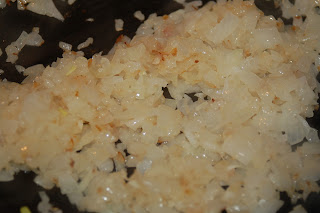Happy National Pie Day!!!
For those of you who don't know, January 23rd is National Pie Day which is not to be confused with National Pi Day on March 14th. I've always wanted to cook something for this auspicious day, but was always a "day late or a dollar short" around this time of year. This year, I was ready! Ok, I'm really eating leftover take out pizza - the results from last night's allergy attack which totally counts but I finally made something in honor of this special day. Swiss Chard Spanikopita Casserole.
I made this as part of my nod to Tu B'Shevat. Tu B'Shevat is Hebrew for the 15th of the month of Shevat and is the Jewish New Year for the Trees. It is one of the few Jewish holidays without a strong food tradition. For me, it's a time of year to reflect on my role in nature and to revel in the beauty of the natural world. Some people eat of the seven species mentioned in the Torah, of which one is wheat. I decided that eating locally and in season is my way of celebrating Tu B'Shevat this year.
Before I left for my work conference this week, I wanted to use up the swiss chard that I had picked up from Hydro Harvest Farms last week. I had a recipe in mind, a riff on spanikopita that I found from Cooking Light's website called Swiss Chard Spanikopita Casserole. For those of you that don't know, Spanikopita is Greek for "spinach pie" and is typically a combination of spinach and cheese baked between phyllo sheets and is a caloric nightmare thinly disguised by the greens held inside. This recipe cuts the majority of the calories out since it uses cooking spray in between each phyllo layer instead of oil or butter. I was a bit skeptical, but I love Spanikopita in all its caloric wonder and am determined to find a way to enjoy it without guilt. I think I found it and now I am get to share it with you!
First, let me be honest and say that I did not make the phyllo and instead purchased it in the frozen section at my local Publix. I followed the directions on the box for defrosting. Then I did my mise en place which included washing, de-stemming and ribboning the swiss chard, chopping the chives, onions, garlic and herbs. I planned on making the filling the day before I made the dish.
In my house growing up, if it didn't start with an onion, it must have been dessert.
Mince three small yellow onions and six to eight cloves of garlic. Pour about 2 tablespoons of a neutral flavored oil on medium high heat in the largest saute pan you have - you'll need the room for all of your greens later on.
Saute the onions until they are translucent and then add the garlic.
About a minute later, add the swiss chard and cook until the volume is reduced by half. If all of the swiss chard doesn't fit, add it as the greens wilt and room in the pot opens up. Salt the pan with a pinch of salt.

When the whole kit and kaboodle is nicely wilted, take the pan off the heat and place in a large mixing bowl to cool.
When the greens mixture has cooled to touch, add the egg whites, feta, parmesan, salt and pepper to the mixing bowl and combine.
At this point, I put the mixture in the fridge in a covered bowl until I was ready to make the casserole.
I used Rainbow Swiss Chard and the red stems colored the liquid so it took on a reddish hue. If I didn't know any better, I would have sworn some beets had made it in somehow!
When I was ready to make the casserole, I preheated the oven to 350 degrees and took the mixture out of the fridge and the defrosted phyllo dough sheets. I took out my favorite casserole dish, a 9 by 13 inch Pyrex glass dish with a rubberized lid and sprayed it with cooking spray and began layering phyllo sheets and cooking spray. I layered 8 sheets before spreading the greens and cheese mixture on top and repeating the phyllo sheets and cooking spray.
Prior to placing the casserole in the oven, cut the casserole into 12 sections. This is an important step that should not be skipped. If you skip this, and try to cut the phyllo after you bake it, the phyllo will shatter.
Bake the casserole for 40 minutes or until the phyllo is tanned and crispy. You will need to let this cool off before you eat this or you will get the dreaded roof of the mouth burns. You won't want to because the aromas coming off this casserole is dangerously and overwhelmingly enticing, but please don't get hurt over it. It is just not worth the pain. No food is worth pain. Ok, maybe this is, but it's on you!
Ingredients:
2 tablespoons neutral flavored oil
3 small yellow onions, minced
3/4 cup minced chives
6 - 8 garlic cloves, minced
9 cups chopped and de-stemmed Swiss chard (about 1 1/2 pounds)
6 tablespoons chopped fresh parsley
3 tablespoons minced fresh mint
1 cup (4 ounces) crumbled feta cheese, or half a normal block of feta - what is up with that?
1/2 cup (2 ounces) freshly grated Parmesan cheese
Salt and Freshly Crashed Black Pepper to taste
3 large egg whites
Cooking spray
10 sheets frozen phyllo dough, thawed





















































